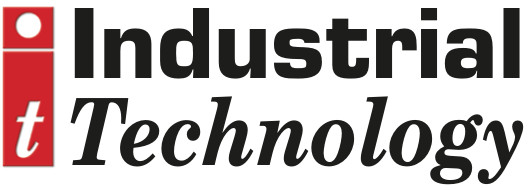
Posted to News on 18th Oct 2017, 00:00
The importance of the safety of workers
John Uber of Mettler Toledo highlights the importance of designing right the first time, and of communications between the user and the supplier.

While consumer safety and protection is of paramount importance when manu-facturing consumable goods, the safety of those working on the production lines must also be considered. There are legal and moral responsibilities to protect workers which go beyond safety for the sake of compliance. It is safety for the protection of people first and foremost.
In spite of the fact that the Machinery Directive makes it a requirement for the instructions to include the intended use, foreseeable misuse, safeguards applied, and residual risks – all fundamental parts of a risk assessment – some suppliers are still reluctant to provide that information to users. It is European law. For the US, there isn’t such a direct legal requirement, but the ANSI B155 standard has long recommended the sharing of the supplier’s design-based risk assessment with the user, as a solid starting point for the user's task-based risk assessment.
One area that presents a significant challenge is integration. There are many things to consider: Are you transferring product on to or off of the inspection device? Are you rejecting packages? How are you accumulating packages? How are you addressing the non-mechanical areas, such as electrical energy, communications and signals, safeguarding and safety circuits? All of these questions should be answered and addressed at the design stage, and reviewed at each stage of the order process.
The most common risks faced in a manufacturing environment with regard to equipment safety are electrical. And there is more concern about electrical energy than any other area, as it is potentially the most severe. These areas are generally well-guarded, and there are established protocols for accessing hazard areas, supported by well-defined standards on design and guarding for these hazards. To take an example, in the US there is great industry awareness for ‘arc-flash’ – where potential energy could be delivered from interaction with a high-voltage source. Arc-flash hazards can cause serious injury or death. If electrical energy is considered potentially harmful, then technical personnel are required to wear protective equipment, such as face-shields, gloves, and cotton-only clothing before accessing panels where voltage exceeds 50V.
Reject areas also present risks. Rejectors are automatic ejection devices, and as such, they are not considered a “point of operation,” as OSHA defines that term. They do operate intermittently and without warning, so those are designed to further minimise the potential injury should a worker reach into a reject area without first de-energizing the system. Potential contact areas are examined to reduce the risk from finger traps. The rejector plates/contact areas, for example, are never more than 6mm from the surface of the belt, so it is difficult to get the finger trapped underneath. Gaps between rejector plates and fixed supports are also examined. There is a gap of 25mm or 50mm between the back of the pusher plate and the support structure. The 25mm gap is larger than a finger would be for a small plate, and the 50mm gap is larger than a hand when larger plates are used.
Transfers are also often overlooked. In product inspection, transfers are critical for performance. This is particularly true with checkweighing, where you need a smooth transition to maintain package stability for weighing. Stability of the package is something that you want with every form of inspection, as the more stable the package, the more reliable the inspection.
Transfers within machinery are governed by the same motor control, and related risks can be designed out. Between machines and other machinery, the transfers are outside our control. Someone has to have an overall view of the interactions between machines. In the EU, the Machinery Directive makes the obligation clear. The user, or the user’s integrator, has responsibility for the safety of the various areas of integration, and for the safety of the “assembly of machinery” – to the point that the Directive makes it a requirement for the user or the user’s integrator to produce a Declaration of Conformity for that assembly of Machinery.
There are four key stages to the safe-design process. The first emphasis – the priority for achieving an acceptable level of risk – is to design out the hazards. The second is to guard against those hazards that cannot be entirely removed. Third, you must advise or notify operators with regard to hazards and risk via labelling. And finally, you must train and instruct effectively. That is the progression to follow in order to design a machine to ‘an acceptable level of risk’.
Safety professionals use this phrase, as the term safe is often used too freely, and frankly is unattainable. Machines, regardless their function, can never be 100% safe. Suppliers strive to reach a level of acceptable risk, and this should be reviewed openly with the user. That can mean gap control between guards, or maintaining certain operating parameters.
For instance, if you have a system which has been designed and you do not want the pusher plate to go beyond the edges of a conveyor, you design it with an air cylinder with only enough travel to perform the required function. It is mechanically constrained so that it cannot create a more hazardous condition. We also think “adjustment can be mis-adjustment.” Any time we can design with a fixed position, we do, in order to reduce the chance that someone will adjust the machine to an unsafe position.
Design and risk assessment should be concurrent. There is little point waiting until a machine is at the installation stage to run a risk assessment. By then it is very difficult to make changes if necessary. The assessment must be carried out parallel to the design process. This reiterates the point that the first stage is to design-out the hazards. Consider the potential hazards during the design and you will have a much lower-risk machine in the end.
Another aspect of designing-out from the hazards is related to hygienic design. You cannot put a guard on a microbe, so if you have a hazard relating to liquid pooling for example, this has to be designed out before a machine is put into production. There is a minimal risk to the workers here – more to the consumer – but loss of brand reputation through microbiological or cross-contamination could lead to plant closures. If that happens there is no worker safety issue at all – but of course that is very far from the ideal scenario.
Suppliers have a responsibility to highlight and help safeguard against potential risks. On an application basis, suppliers should explain to the user the following: how the machine is designed; what safeguards are present; and what residual risks are transferred to the user. That is the risk assessment essentially – which should be the basis of a conversation between the user and the supplier.
On a larger perspective, companies from the supplier and user side should be encouraged to collaborate and work in industry groups. Participation in industry standards leads to the development of soundly structured best practice guidelines. Industry groups such as ANSI and OpX are good examples. These interactions at the very top level set the tone and establish best practices for how to communicate with customers to make sure firstly that the supplier provides all the necessary information, and secondly that the user has that information to apply when they integrate the system into the line.
When it comes to training to ensure machines are operated safely once installed, of course suppliers can train customers on the hazards that are present in the system. But the bigger side of ensuring adequate training is for the user to conduct a task-based risk assessment. Users know how their operators are going to interact with the equipment, and the interfaces of all the machinery in that area. The frequency of interaction positions, where personnel are accessing different parts of the system – these are variables that the supplier cannot control.
From an integration perspective, safeguards at machine interfaces should be provided by those who have control of the design in those interface areas, and have knowledge of hazards that may be present or may be introduced through the assembly of machinery. ANSI B155 identified five categories for integration consideration – mechanical, electrical, communications and signals, safeguards, and safety circuits. To assist the user in this important task, Mettler-Toledo Product Inspection provides safety and interface information to allow the responsible persons to plan and execute the safe integration in an efficient manner.








